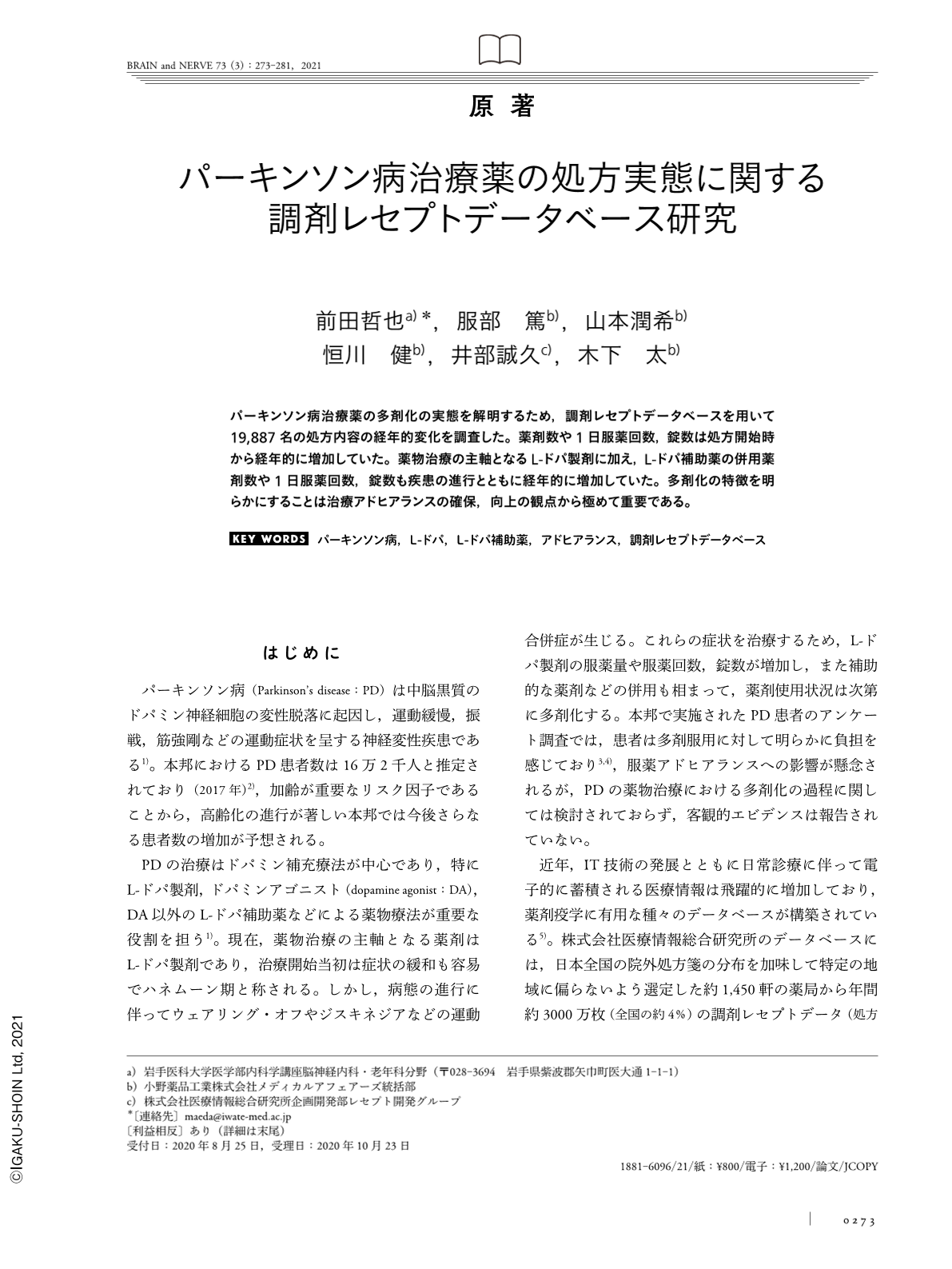Japanese
English
- 有料閲覧
- Abstract 文献概要
- 1ページ目 Look Inside
- 参考文献 Reference
パーキンソン病治療薬の多剤化の実態を解明するため,調剤レセプトデータベースを用いて19,887名の処方内容の経年的変化を調査した。薬剤数や1日服薬回数,錠数は処方開始時から経年的に増加していた。薬物治療の主軸となるL-ドパ製剤に加え,L-ドパ補助薬の併用薬剤数や1日服薬回数,錠数も疾患の進行とともに経年的に増加していた。多剤化の特徴を明らかにすることは治療アドヒアランスの確保,向上の観点から極めて重要である。
Abstract
The current therapeutic approach for Parkinson's disease (PD) is mainly dopamine replacement with levodopa and other anti-parkinsonian drugs. As PD progresses, the number of these drugs used steadily increases. Using prescription-based database for 10 or more years up to October 2019, we investigated actual prescribing patterns for anti-parkinsonian drugs in Japan. The main analyses included data from patients continuously prescribed levodopa for 1 or more years (n=16,270), and of these, those continuously prescribed adjuvants to levodopa for 1 or more years (n=3,675). The results showed that the number of anti-parkinsonian drugs, their daily dose frequencies, and the number of tablets increased over time. These trends were observed not only for levodopa but also for adjuvants to levodopa; the number of adjuvants, their daily dose frequencies and number of tablets also increased. As the daily number of tablets increased, the proportion of dopamine agonists increased. Moreover, as the daily dosage of levodopa increased, the daily number of tablets increased for both overall anti-parkinsonian drugs and adjuvants to levodopa. This study revealed the process of polypharmacy in PD treatment objectively. Our results are valuable for maintaining and improving therapeutic adherence in PD.
(Received 25 August, 2020; Accepted 23 October, 2020; Published 1 March, 2021)

Copyright © 2021, Igaku-Shoin Ltd. All rights reserved.


